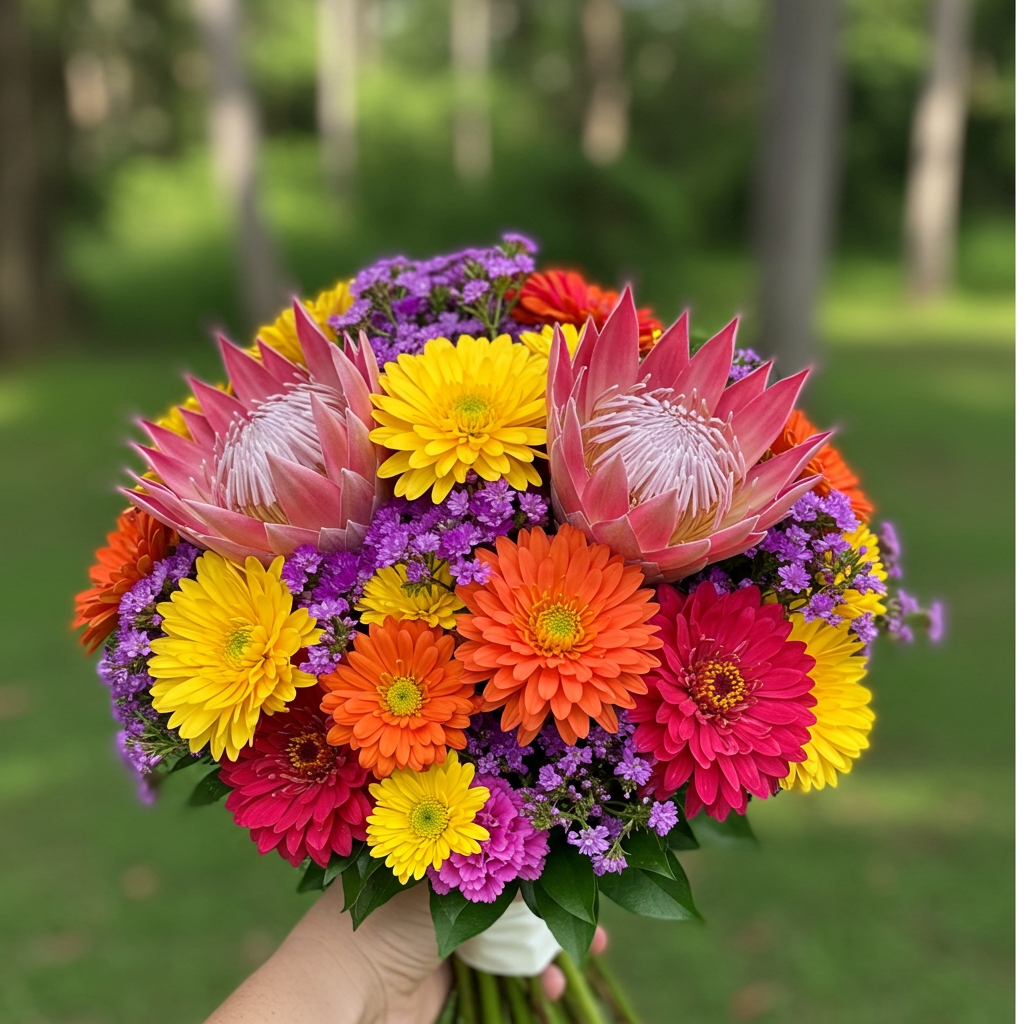Discover the hidden environmental impact of your Florida flower purchase and learn how to make more sustainable choices that support local ecosystems and reduce your carbon footprint.
Floridians love their vibrant blooms, but few consider the environmental journey of that beautiful bouquet. From pesticide use to transportation emissions, the floral industry can have a significant impact. This post delves into the sustainability of Florida’s flower industry and empowers you to make eco-conscious choices.

The Environmental Footprint of Florida Flowers
Florida’s climate makes it a prime location for flower cultivation. However, conventional flower farming practices can take a toll on the environment. Let’s examine some key areas:
Pesticide Use and Water Consumption
- Chemical Dependence: Many commercial flower farms rely heavily on pesticides and herbicides to protect their crops. These chemicals can contaminate soil and water sources, harming beneficial insects and pollinators.
- Water Intensive Cultivation: Growing flowers requires significant amounts of water, especially in Florida’s warm climate. Unsustainable water management practices can deplete local water resources and contribute to drought.
- Alternatives: Look for flowers grown using Integrated Pest Management (IPM) which minimizes chemical use. Choosing locally grown flowers reduces transportation distances and associated water consumption.
Transportation and Carbon Emissions
- Flower Miles: Many flowers sold in Florida are imported from South America, creating a considerable carbon footprint due to airfreight.
- Packaging Waste: Traditional floral packaging often involves plastic wrap, cellophane, and floral foam, contributing to landfill waste.
- Sustainable Solutions: Opting for locally grown flowers drastically reduces transportation emissions. Look for florists who use eco-friendly packaging like recycled paper or biodegradable options.
Choosing Sustainable Flowers in Florida
Making eco-conscious flower choices can have a real impact. Here’s how you can support sustainable floriculture:
Buy Local and Seasonal Blooms
- Florida Native Flowers: Choosing native flowers supports local biodiversity and requires less water and specialized care.
- Seasonal Selection: Opting for flowers that are naturally in season reduces the need for energy-intensive greenhouse cultivation.
- Farmers’ Markets and Local Growers: Purchasing directly from local farmers or visiting farmers’ markets ensures you’re getting the freshest, most sustainable blooms.
Look for Eco-Certifications
- Veriflora: This certification ensures that flowers are grown using sustainable practices, including fair labor standards and reduced pesticide use.
- Rainforest Alliance Certified: Look for this certification on flowers grown in tropical regions, indicating responsible environmental and social practices.
- Asking Questions: Don’t hesitate to ask your florist about their sourcing practices and sustainability initiatives.
Consider Alternatives to Cut Flowers
- Potted Plants: A potted plant is a longer-lasting gift and can continue to thrive in the recipient’s home.
- Seed Bombs: Give the gift of future blooms with seed bombs, which are fun and eco-friendly.
- Dried Flower Arrangements: Dried flowers offer a unique and sustainable alternative to fresh cut blooms.
Growing Your Own Flowers
Cultivating your own flowers is the ultimate sustainable option.
Starting a Flower Garden:
- Choosing the Right Flowers: Select flower varieties suited to Florida’s climate and your specific garden conditions.
- Sustainable Gardening Practices: Use organic fertilizers and pest control methods to minimize environmental impact.
- Water Conservation: Implement water-saving techniques like drip irrigation and rainwater harvesting.
Benefits of Growing Your Own:
- Reduced Environmental Impact: Eliminate transportation emissions and control pesticide use.
- Connection with Nature: Enjoy the therapeutic benefits of gardening and connect with the natural world.
- Fresh, Beautiful Blooms: Have a readily available supply of beautiful, chemical-free flowers.
FAQs: Sustainable Flowers in Florida
Q: What are some examples of native Florida flowers?
A: Some beautiful Florida natives include Blanket Flower, Coreopsis, Firebush, and Butterfly Milkweed.
Q: Where can I find locally grown flowers in Florida?
A: Check out local farmers’ markets, community-supported agriculture (CSA) programs, and search online for florists who prioritize local sourcing.
Q: Are organic flowers always sustainable?
A: While organic practices reduce chemical use, it’s important to consider other factors like transportation distance and water consumption. Look for certifications that encompass a holistic approach to sustainability.
Q: How can I make my own eco-friendly flower arrangements?
A: Use recycled paper, natural twine, and avoid floral foam. Consider incorporating natural elements like branches, leaves, and dried flowers.
Q: What are the benefits of supporting sustainable floriculture?
A: By choosing sustainable flowers, you contribute to the protection of pollinators, conserve water resources, reduce pollution, and support local farmers dedicated to responsible environmental practices.
Conclusion: Blooming with Sustainability
Making sustainable flower choices in Florida is more than just a trend; it’s a necessary step towards protecting our environment. By understanding the impact of conventional floriculture and embracing eco-conscious alternatives, we can enjoy the beauty of flowers without compromising the health of our planet. From choosing locally grown blooms to cultivating our own gardens, each conscious decision contributes to a more sustainable and vibrant future for Florida’s floral landscape.

